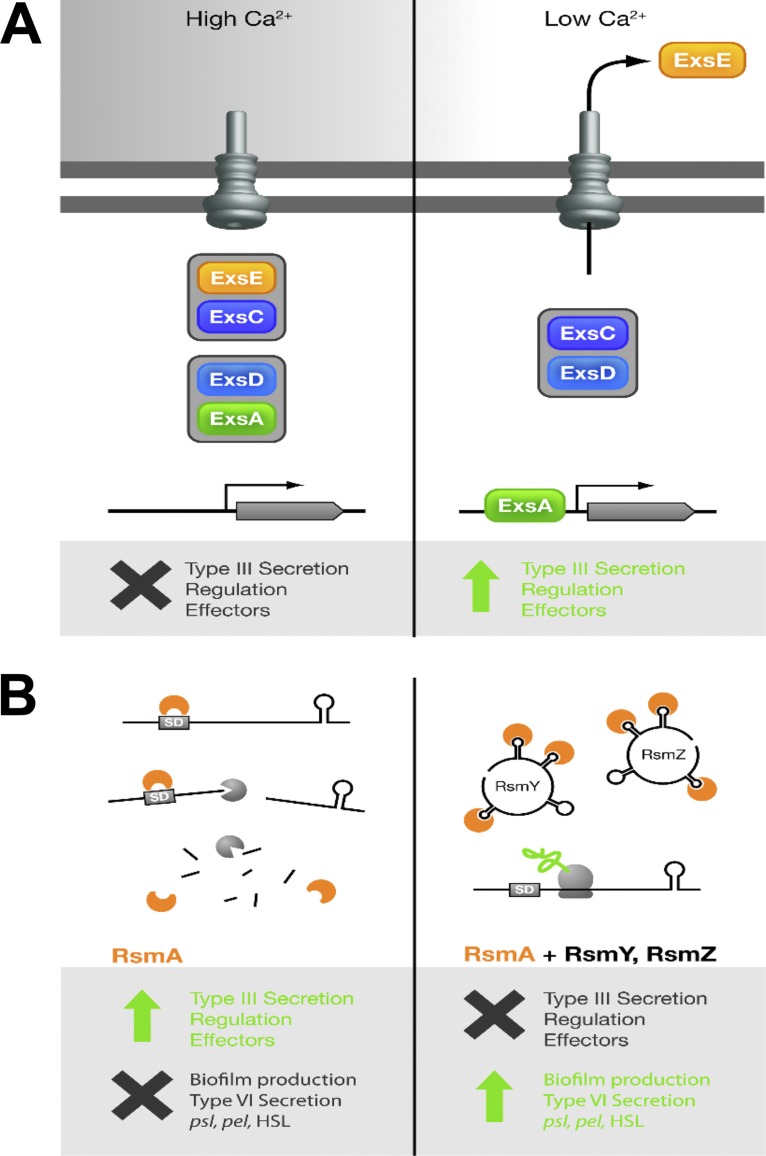FIG 1.
Models of the control of type III secretion in P. aeruginosa and the control of RsmA activity. (A) Model of type III secretion system regulation in P. aeruginosa. Under conditions of high calcium (Ca2+) concentrations (left), ExsE forms a complex with ExsC, ensuring that ExsA forms a complex with ExsD, thus preventing expression of the type III secretion genes. In response to low calcium (right), ExsE is secreted, allowing ExsC to form a complex with ExsD, thus allowing ExsA to activate transcription from target promoters. In both panels, the gray lines correspond to the outer membrane (uppermost line) and inner membrane. (B) Reciprocal regulation of acute and chronic virulence determinates by the posttranscriptional regulator RsmA and the sRNAs RsmY and RsmZ. When RsmA (depicted in orange) recognizes GGA target sites within, or in close proximity to, Shine-Dalgarno sequences (SD) on target mRNAs, translation is inhibited, which can result in the degradation of target transcripts. This promotes expression of the T3SS genes (indicated by the arrow) and inhibits biofilm formation as well as expression of T6SS genes (indicated by the cross). Under conditions in which the production of the sRNAs RsmY and RsmZ is upregulated, these sRNAs interact with RsmA, thus sequestering it from target mRNA species, resulting in their translation. This serves to repress T3SS gene expression but enhance biofilm formation and T6SS gene expression. HSL, homoserine lactone.

